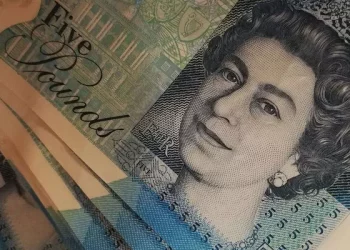In the vast tapestry of global currencies, each denomination tells a unique story about a nation’s economic history, cultural heritage, and financial stability. Russia, with its rich history and diverse economy, is no exception. In recent times, there has been a buzz surrounding the existence of a 5000 ruble note. In this comprehensive exploration, we delve into the origins, significance, and potential impact of the elusive 5000 ruble note.
The Evolution of the Russian Ruble
To understand the context of the 5000 ruble note, one must first trace the evolution of the Russian ruble. The ruble, denoted as RUB, has been the official currency of Russia for centuries. Its history dates back to the medieval period, and over time, the ruble has undergone several transformations in terms of design, denominations, and security features.
The modern Russian ruble, introduced in 1992 following the collapse of the Soviet Union, has witnessed a series of denominational additions. The 1000, 500, 100, 50, and 10 ruble notes are commonly circulated, with each bearing distinctive cultural and historical motifs. However, the mention of a 5000 ruble note has sparked intrigue and speculation.
Dispelling Myths: Is There Really a 5000 Ruble Note?
Rumors and speculations about a 5000 ruble note have circulated in financial circles and among the general public. Some claim to have seen images or heard official announcements, while others dismiss it as mere hearsay. To get to the bottom of this mystery, we turn to the official sources and statements from the Central Bank of Russia.
As of the latest information available, there is no official confirmation from the Central Bank of Russia regarding the issuance of a 5000 ruble note. While the possibility of introducing new denominations is not uncommon, the absence of official announcements raises questions about the authenticity of these claims. We delve into the potential motivations behind such rumors and their implications for the Russian economy.
The Role of Central Banks in Currency Design and Issuance
Central banks play a pivotal role in a nation’s monetary system, overseeing the design, production, and circulation of currency. In the case of Russia, the Central Bank holds the responsibility of ensuring the stability and integrity of the ruble. The decision to introduce a new banknote, especially of a higher denomination like 5000 rubles, involves meticulous consideration of economic factors, inflation rates, and public demand.
Experts argue that the introduction of higher denominations can have both positive and negative consequences. On one hand, it may streamline transactions and cater to the evolving needs of a growing economy. On the other hand, it could potentially lead to inflationary pressures and impact the purchasing power of the currency. As we explore the dynamics at play, we also examine historical instances of currency changes in Russia and their repercussions.
The Economic Implications of Introducing a 5000 Ruble Note
If indeed there were plans to introduce a 5000 ruble note, the economic implications would be far-reaching. This section explores the potential effects on inflation, consumer behavior, and the overall economic landscape. We analyze case studies from other nations that have introduced higher denomination banknotes to draw parallels and anticipate the possible outcomes for Russia.
One key consideration is the impact on cash transactions versus digital payments. In an era where digital currencies and contactless payments are gaining prominence, the decision to introduce a high-value banknote may signal a strategic move to boost the cash-centric segments of the economy. However, this must be balanced with the need for financial transparency and security measures.
The Artistry of Banknote Design: A Glimpse into Russian Culture
Beyond the economic and logistical aspects, the design of a banknote carries significant cultural and historical weight. Russian banknotes have traditionally featured iconic figures, landmarks, and symbols that reflect the nation’s rich heritage. In imagining a 5000 ruble note, artists and designers would need to carefully curate elements that resonate with the public while adhering to the security standards mandated by the Central Bank.
In this section, we explore the artistic potential of a 5000 ruble note, envisioning the integration of Russian art, literature, and scientific achievements. We also consider the importance of inclusivity and representation on banknotes, acknowledging the diverse cultural tapestry that is Russia.
See Also:Are Old Rubles Worth Anything?
Public Perception and Trust in Currency
Trust in a nation’s currency is paramount for its stability and acceptance. The introduction of a new banknote, especially of a higher denomination, can influence public perception and confidence in the monetary system. We delve into the psychological aspects of currency and how the public may respond to the prospect of a 5000 ruble note. Additionally, we explore strategies employed by central banks to communicate changes in currency and maintain public trust.
Conclusion: Unraveling the Enigma of the 5000 Ruble Note
In the realm of currency, every note tells a story – a narrative of a nation’s progress, heritage, and aspirations. The 5000 ruble note, whether it exists or not, captures the imagination and curiosity of individuals both within and beyond Russia’s borders. As we navigate the intricate landscape of monetary policy, economic considerations, and artistic expression, the enigma of the 5000 ruble note remains an intriguing facet of Russia’s evolving financial narrative.
Only time will reveal whether this denomination becomes a reality or remains a tantalizing rumor, but in the process, we gain valuable insights into the dynamics that shape a nation’s currency and its enduring role in the global economic stage.
Related Topics:
Value Behind the 1910 Russia 100 Rubles
What Russia’s New Banknotes Look Like?
What Is the Symbol for Russian Ruble?


























